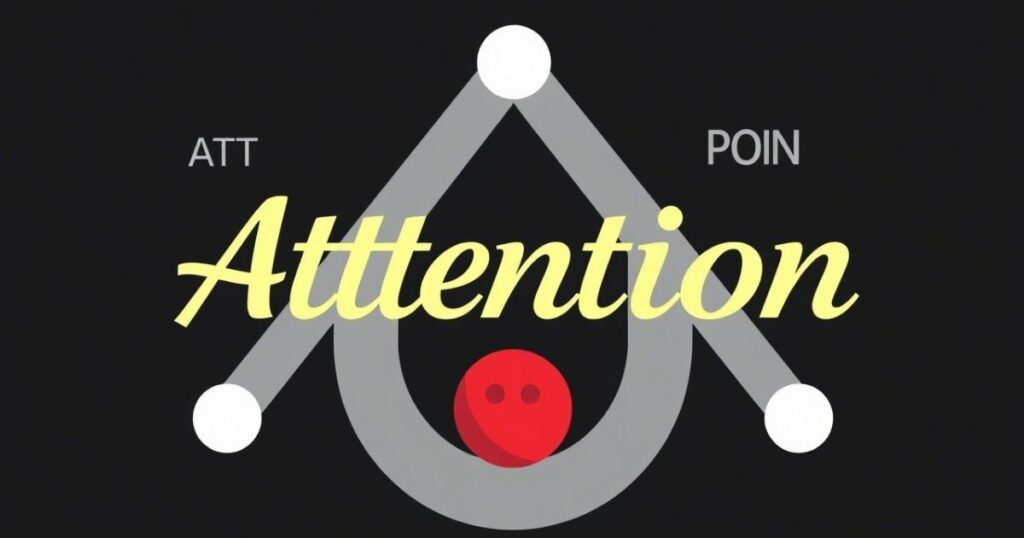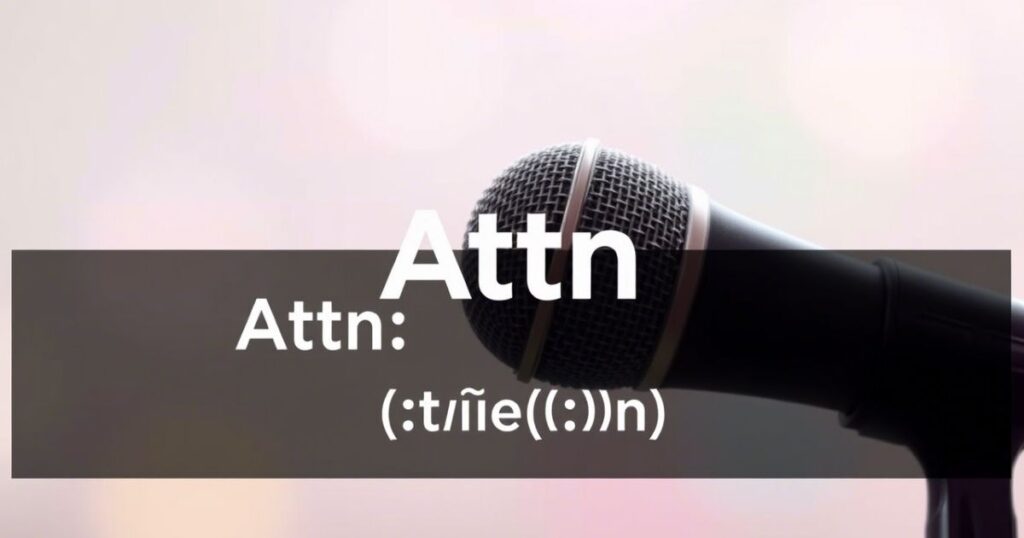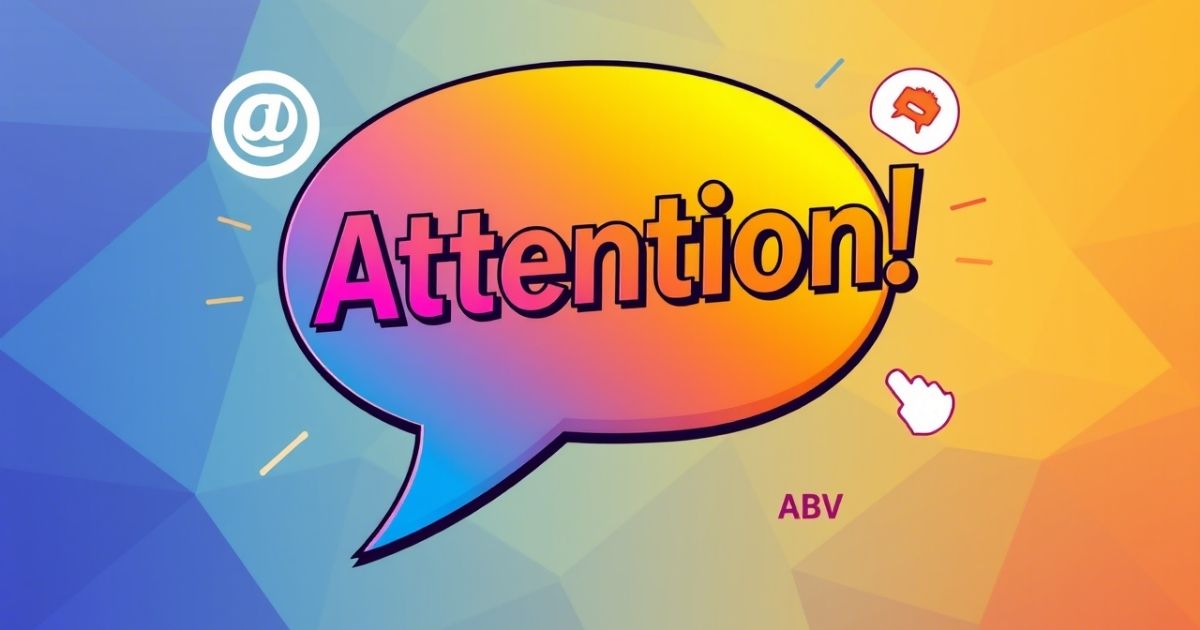The abbreviation for attention is commonly used in professional communication to direct someone’s focus quickly. The most popular form is “Attn,” which stands for “Attention.” You’ll often see the abbreviation for attention in some subject lines of emails, memos, and letters, making it easier to highlight specific individuals or departments. Using this abbreviation helps streamline messages, saving time and ensuring clarity. It’s particularly useful in busy work environments where quick attention is needed.
In many cases, you might find the abbreviation for attention used to draw focus to important tasks or notices. For example, in some subject lines, a manager might write, “Attn: HR Department – Important Update,” which instantly signals the reader about the topic. The abbreviation for attention in some subject lines helps recipients quickly understand where their attention should go, enhancing efficiency in communication. By incorporating this simple yet effective abbreviation, communication becomes more organized and less time-consuming.
What is the Abbreviation for Attention?
The most common abbreviation for Attention is “Attn.” It’s typically used in formal communication to point out the intended recipient. You’ll often see it in letters, packages, or emails that need to grab someone’s focus quickly.
You might notice the abbreviation for Attention on mailing labels, especially in business settings. It’s placed before the name of the person or department meant to receive the document. This ensures the right eyes see the right message without delay.
Using the abbreviation for Attention saves time and space while keeping things professional. It prevents confusion, especially in offices or organizations with many departments. A simple “Attn” helps direct important information exactly where it needs to go.
How “Attn” Is Commonly Used in Communication
“Attn” is most commonly used at the beginning of a letter or on an envelope to specify the person or department for whom the document is intended. It acts as a pointer, ensuring that the document is handled appropriately upon receipt. This usage is particularly common in business mail, legal documents, and customer service correspondence.
In digital communication, “Attn” is often used in the subject line of emails to draw attention to the message’s relevance for a specific individual. For example, an email subject might read: Attn: John Smith – Project Deadline Update. This format helps prioritize the message in the recipient’s inbox, especially when multiple parties are included.
Even on internal memos or notices, adding “Attn” can guide the content to its proper audience. Its usage shows respect for protocol and enhances clarity in communication, making it a vital tool in both traditional and modern professional environments.
What Does Abbreviation for Attention Mean?
The abbreviation for attention “Attn:” is used to direct something to a specific person or department. It’s often seen on envelopes, emails, or memos.
- It ensures the message reaches the right individual quickly.
- Common in professional and formal communication.
When you see abbreviation for attention, it signals that the content requires immediate focus. It helps prioritize messages in busy environments.
- It’s a clear indicator of urgency.
- Typically used in business, legal, and customer service contexts.
Why Abbreviate ‘Attention’?

The abbreviation for Attention streamlines communication, especially in formal or time-sensitive contexts. It saves space on memos, emails, and official documents. In professional writing, clarity and brevity are key.
In military or business settings, the abbreviation for Attention (“Attn:”) directs focus quickly. It ensures the message reaches the correct recipient without confusion. This shorthand supports efficiency in correspondence.
Using an abbreviation for Attention enhances readability in printed materials and packaging. For example, on envelopes or labels, “Attn:” tells postal services or offices who the intended receiver is. It eliminates unnecessary wording.
The popularity of the abbreviation for Attention comes from its universal recognition. People across industries instantly know what “Attn:” means. It’s a small change that makes a big impact in communication.
Alternatives to “Attn” in Professional Writing
While “Attn” is commonly used, there are alternatives depending on the formality or platform. In email headers, using a recipient’s name directly (e.g., To: Jane Doe) can serve a similar function. Subject lines can also use phrases like For the Attention of or Directed to for a more formal tone.
In letters or memos, instead of “Attn,” some writers opt to use “FAO” (For the Attention Of), especially in British English. While less common in American usage, FAO serves the same purpose and is widely understood in international communication.
Choosing between these alternatives often depends on tone, audience, and regional preference. Regardless of which term you use, the goal remains the same: to make sure your message reaches the right person without delay or misunderstanding.
Abbreviating Attention in Formal and Informal Contexts
In formal contexts, such as legal, governmental, or corporate communications, “Attn” is a standard and widely accepted abbreviation. Its presence helps maintain a professional tone while still being efficient. It is typically written with a colon following it and is placed above the name or title of the intended recipient.
Informally, “Attn” might be used in casual email subject lines or notes to direct someone’s focus to specific information. For example, a colleague might write, Attn: Budget Review Needed Today, in a Slack message or quick email. While less formal, this still conveys urgency and relevance.
However, in very casual communication like texts or informal chats, people often omit “Attn” entirely and simply address the person directly. Understanding when and where to use “Attn” is important for striking the right tone in any given context, whether you’re addressing your boss or a friend.
Related Guide:
Abbreviation for Invoice Common Invoice Terms
Are There Other Abbreviations for Attention?
The most common abbreviation for Attention is “Attn.” It’s frequently used in mailing addresses or business correspondence. This short form helps direct communication to the right individual or department.
Besides “Attn,” alternatives like “ATT” or “ATTN:” are also in use. These variations serve the same purpose in different contexts. Still, “Attn” remains the standard abbreviation for Attention in formal settings.
In digital communication, informal shortcuts like “FYI” (For Your Information) may imply attention is needed. However, these aren’t true abbreviations for Attention but rather related in meaning. It’s key to know the difference in professional writing.
Choosing the right abbreviation for Attention depends on the platform and audience. Formal letters require clear and recognized abbreviations like “Attn.” Using consistent and proper forms boosts clarity and professionalism.
When Should You Use “Attn”?
“Attn” should be used when your message needs to reach a specific person or team within a larger organization. It is especially useful when the recipient is not the only person at the address or if the message could otherwise be misrouted.
For instance, if you’re sending a complaint to a company’s customer service department, using Attn: Customer Service Manager will help ensure that your message reaches someone who can take action. This specificity is crucial in situations where time and proper response are important.
Additionally, using “Attn” demonstrates a level of professionalism and courtesy. It shows that you’ve made an effort to direct your message correctly, which can positively influence how your communication is received and prioritized.
Pronunciation of ‘Attn’
The pronunciation of ‘Attn’, the abbreviation for Attention, is generally spoken as the full word “attention.” People rarely say each letter separately in conversation or formal speech. This helps keep the tone natural and avoids any misunderstanding.
When used in letters or documents, it’s best to read ‘Attn’ as “attention” out loud. Though it’s written as an abbreviation for Attention, speaking the full word sounds clearer and more professional. This approach works well in meetings, presentations, and business communication.
Acronym for Attention
An abbreviation for Attention is often represented as “ATTN” in formal and informal communication. It helps direct focus quickly, especially in business letters and memos. This shorthand ensures that the right person or department pays notice without delay.
The abbreviation for Attention serves as an efficient way to highlight urgency or importance. Used in subject lines or headers, “ATTN” acts like a spotlight on vital details. In fast-paced environments, it’s a clarity booster that prevents missed messages.
How to Pronounce Abbreviation for Attention

Before diving deeper into the abbreviation for attention, let’s quickly clarify what “Attn” stands for. It’s short for “attention,” a term widely used in both business and personal communication. Here’s how it works:
- Attn is used to direct a message to a specific person.
- It’s commonly placed at the top of letters, emails, and packages.
Understanding its purpose helps streamline communication, ensuring the right person receives important information.
Synonyms and Antonyms for Attention
The abbreviation for attention is “Attn.” Synonyms for attention include “focus” and “concentration,” while antonyms like “distraction” and “inattention” suggest a lack of focus. These terms are useful for clear communication, especially in formal setting.
Synonyms for Attention:
- Focus
- Concentration
- Awareness
- Regard
- Consideration
Antonyms for Attention:
- Inattention
- Distraction
- Neglect
- Unawareness
- Indifference
The History of the Word Abbreviation for Attention

The abbreviation for attention has roots in early administrative practices. In formal letters and memos, “Attn:” became the standard shorthand. This helped direct documents swiftly to the intended recipient.
During the typewriter era, space and efficiency were key. The abbreviation for attention, “Attn,” saved time and reduced typing errors. It quickly became a staple in both business and government communications.
As email replaced paper letters, the abbreviation for attention adapted. “Attn:” began appearing in subject lines to highlight urgency. Despite tech changes, its purpose stayed the same, capturing focus fast.
Today, the abbreviation for attention remains common in digital and physical correspondence. It signals priority and ensures prompt reading. This tiny term holds big importance in modern communication.
Examples of “Attn” in Business and Mailing Addresses
A classic example of “Attn” in use is on the outside of a business envelope:
ABC Corporation
Attn: Mr. James Taylor
123 Business Road
New York, NY 10001
In emails, a subject line like Attn: Marketing Department – Feedback Request shows the recipient immediately that their team is being addressed. This format helps route the message correctly and highlights the content’s relevance to the specified group.
Even online forms or contact submissions often use fields like Attn: (Recipient’s Name) to ensure the inquiry goes to the right person. These examples show how “Attn” helps create clarity and structure in professional communication systems.
Other Examples of Abbreviations Related to Attention
While “Attn” is the standard abbreviation for “Attention,” there are other abbreviations that can also draw focus. Here are a few examples:
- FYI – “For Your Information” is often used to share important details.
- RE – “Regarding” or “Concerning” is used to specify the subject of a message.
For example:
- FYI: The team meeting has been rescheduled.
- RE: New Policy Updates.
These abbreviations are helpful for clear and concise communication, especially in fast-paced environments.
Examples of the Word and Abbreviations in Context
Let’s look at a few practical examples of how “Attention” and its abbreviation, “Attn,” are used:
- Example 1: In an email subject line:
Subject: Attn: Marketing Team – New Product Launch Strategy. - Example 2: On a memo:
Attn: All Staff – Reminder to complete safety training by Friday. - Example 3: In a formal letter:
Attn: Mr. Alex Turner, Customer Service Department.
These examples show how using “Attn” helps ensure the message reaches the right person or department quickly and clearly.
FAQ’s
What does the abbreviation in subject lines mean?
When used in subject lines, it helps to quickly direct attention to the correct person or department. The abbreviation for attention ensures clarity.
How does this abbreviation improve communication?
It makes messages more concise and highlights important details. The abbreviation for attention helps professionals focus on key points right away.
Where is this abbreviation typically used?
It’s common in emails, memos, and official letters. The abbreviation for attention is often used to draw focus to a specific recipient or department.
Why is this abbreviation important in business?
This abbreviation saves time and ensures messages are directed properly. The abbreviation for attention makes communication in the workplace more efficient and organized.
Can this abbreviation be used in all types of communication?
Yes, it’s widely used in formal and professional contexts. The abbreviation for attention is helpful in emails, memos, and other business communications.
Conclusion
The abbreviation for attention is a simple yet powerful tool for directing focus in communication. The most common abbreviation for attention, “Attn,” is widely used in some subject lines to ensure messages reach the right person quickly. Whether in emails, memos, or letters, this abbreviation helps streamline communication, making it more efficient and easier to navigate. It is especially useful in busy environments where attention to detail is crucial.
Using the abbreviation for attention in some subject lines allows recipients to instantly recognize the importance of the message. The abbreviation for attention in some subject lines not only improves clarity but also saves time, helping professionals stay organized. By incorporating this handy abbreviation, it’s easier to ensure that important information does not get overlooked, improving overall communication effectiveness. The abbreviation for attention is a small but impactful way to enhance the focus and speed of your communication.

Atlas Reid is an experienced administrator with 5 years of expertise in managing operations, streamlining processes, and ensuring efficiency. Skilled in leadership, organization, and problem-solving to drive business success.








